By Leen Randell
Updated: Jul 04, 2024
10 Best Herbal Decoctions For Back Pain
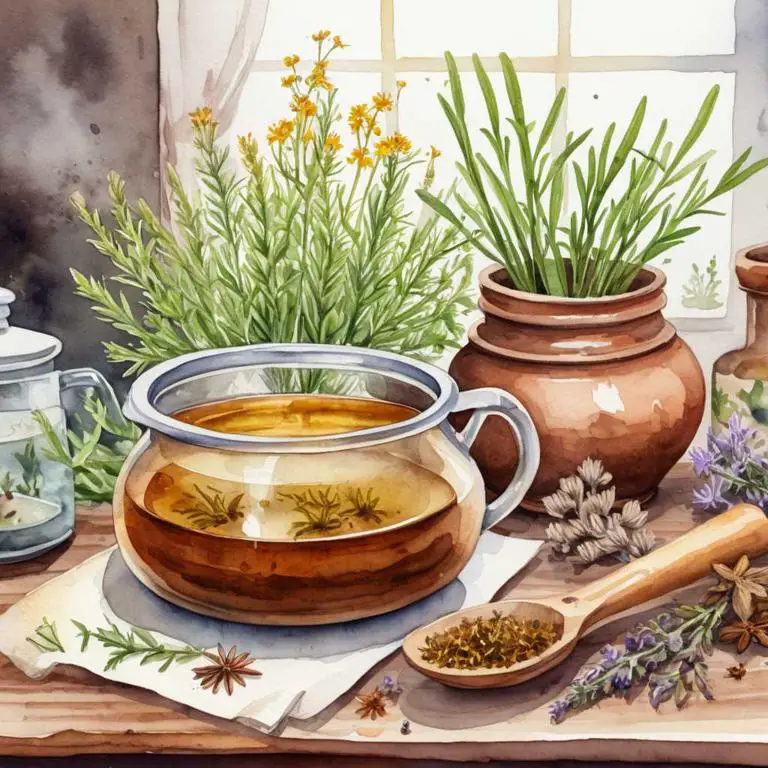
Herbal decoctions for back pain are a natural and effective way to alleviate chronic back discomfort.
These concoctions involve steeping herbs in hot water to release their active compounds, which then absorb into the body, targeting inflammation, stiffness, and pain. Examples of herbal decoctions that help with back pain include willow bark tea, rich in salicin similar to aspirin, and turmeric root decoction, containing curcumin with potent anti-inflammatory properties.
By reducing pain and inflammation, these herbal decoctions can improve mobility, reduce medication dependence, and enhance overall quality of life for individuals suffering from back pain.
The following article describes in detail the most important decoctions for back pain, including medicinal properties, parts of herbs to use, and recipes for preparations.
- 1. Salix alba
- 2. Glycyrrhiza glabra
- 3. Cannabis sativa
- 4. Ginkgo biloba
- 5. Curcuma longa
- 6. Angelica archangelica
- 7. Foeniculum vulgare
- 8. Urtica dioica
- 9. Rosa rugosa
- 10. Vaccinium macrocarpon
- What is the best combination of herbal decoctions to use for back pain?
- What ailments similar to back pain are treated with herbal decoctions?
1. Salix alba
White willow decoctions helps with back pain because they contain salicin, a compound similar to aspirin that has anti-inflammatory properties.
When consumed as a tea or infusion, white willow can help reduce inflammation and ease stiffness in the muscles and joints, providing relief from chronic back pain.
Additionally, white willow's natural analgesic properties can also help alleviate muscle spasms and soreness, making it a popular herbal remedy for managing back discomfort.
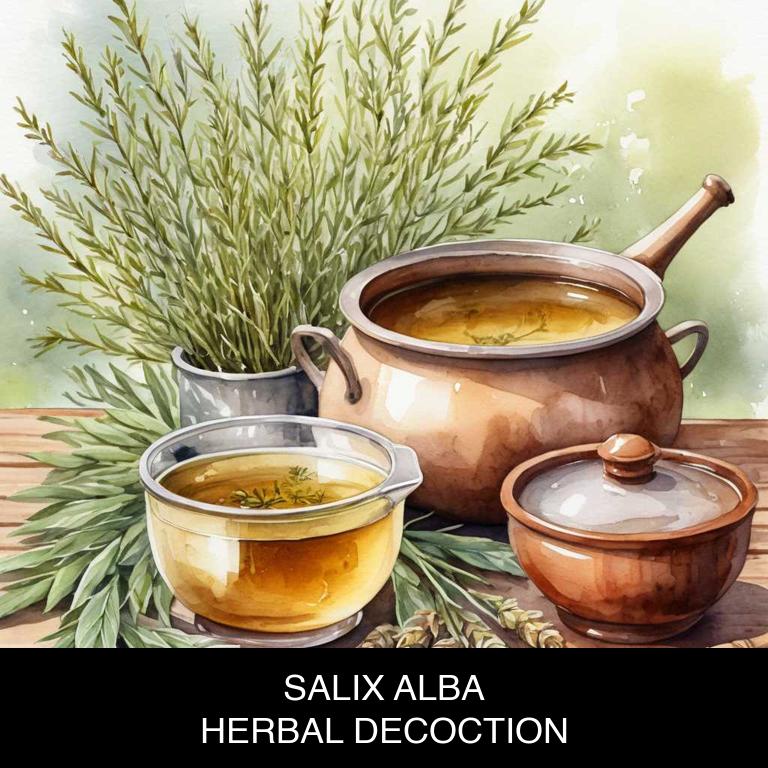
Medicinal Constituents
The list below shows the primary medicinal constituents in Salix alba decoctions that help with back pain.
- Salicin: Salicin, a phenolic compound, is a natural analgesic and anti-inflammatory agent that helps alleviate back pain by reducing inflammation and pain in the affected area.
- Tannins: Tannins, a type of polyphenolic compound, have anti-inflammatory and antioxidant properties that may help reduce inflammation and oxidative stress in the back muscles, leading to relief from back pain.
- Flavonoids: Flavonoids, a class of plant compounds, exhibit anti-inflammatory and antioxidant activities that may help reduce pain and inflammation in the back, as well as promote relaxation and reduce muscle spasms.
Parts Used
The list below shows the primary parts of white willow used to make decoctions for back pain.
- Leaves: Salix alba leaves are used in decoctions to reduce inflammation and relieve back pain due to their analgesic and anti-inflammatory properties.
- Buds: The buds of Salix alba are used to create decoctions that can help reduce pain and inflammation associated with back pain due to their anti-inflammatory properties.
Quick Recipe
The following recipe gives a procedure to make a basic white willow for back pain.
- Gather 20-30 grams of dried salix alba bark and clean it thoroughly with filtered water.
- Boil 500 milliliters of water in a saucepan over high heat for 5 minutes.
- Add the cleaned salix alba bark to the boiling water and reduce heat to low.
- Simmer the mixture for 10-15 minutes or until the liquid has reduced slightly.
- Strain the mixture through a cheesecloth or a fine-mesh sieve into a clean container.
2. Glycyrrhiza glabra
Licorice decoctions helps with back pain because it contains glycyrrhizin, a compound that reduces inflammation and relaxes muscles.
The anti-inflammatory properties help to alleviate discomfort and stiffness in the back, while the relaxing effects calm spasms and reduce muscle tension. Additionally, licorice root has been shown to stimulate the release of neurotransmitters such as serotonin and dopamine, which can help to reduce pain perception.
As a result, herbal licorice decoctions can provide natural relief from back pain and promote overall spinal health.

Medicinal Constituents
The list below shows the primary medicinal constituents in Glycyrrhiza glabra decoctions that help with back pain.
- Licorice saponins: These saponins have anti-inflammatory properties, which may help reduce inflammation and alleviate pain associated with back pain.
- Terpenoids: These compounds have been shown to possess anti-inflammatory, analgesic, and antioxidant properties, which may contribute to pain relief and reduction of inflammation in back pain.
- Flavonoids: These flavonoids are known for their anti-inflammatory and antioxidant properties, which may help reduce pain and inflammation associated with back pain.
Parts Used
The list below shows the primary parts of licorice used to make decoctions for back pain.
- Roots: The roots of Glycyrrhiza glabra are widely used due to their high concentration of glycyrrhizin, a compound with anti-inflammatory properties that helps alleviate back pain.
- Leaves: The leaves of the plant are used to create decoctions for back pain relief due to their content of flavonoids, which have anti-inflammatory and analgesic effects.
- Barks: The barks of Glycyrrhiza glabra are used in decoctions for back pain as they contain flavonoids and phenolic acids that exhibit anti-inflammatory and antioxidant properties.
Quick Recipe
The following recipe gives a procedure to make a basic licorice for back pain.
- Weigh 20 to 30 grams of dried glycyrrhiza glabra roots and rinse them with lukewarm water.
- Crush the roots into fine powder using a mortar and pestle or a spice grinder.
- Combine the powdered roots with 500 milliliters of water in a saucepan and bring to a boil.
- Reduce the heat to a simmer and let the decoction steep for 10 to 15 minutes.
- Strain the decoction through a cheesecloth or a fine-mesh sieve into a clean container.
3. Cannabis sativa
Marijuana decoctions helps with back pain because they provide a natural and non-invasive way to alleviate discomfort.
The herbs used in these decoctions, such as willow bark, ginger, and turmeric, contain compounds that reduce inflammation and relax muscles. This combination helps to relieve tension in the back and joints, providing relief from chronic pain and stiffness.
By soothing the body naturally, herbal marijuana decoctions can provide long-lasting relief from back pain without relying on addictive medications or invasive procedures.
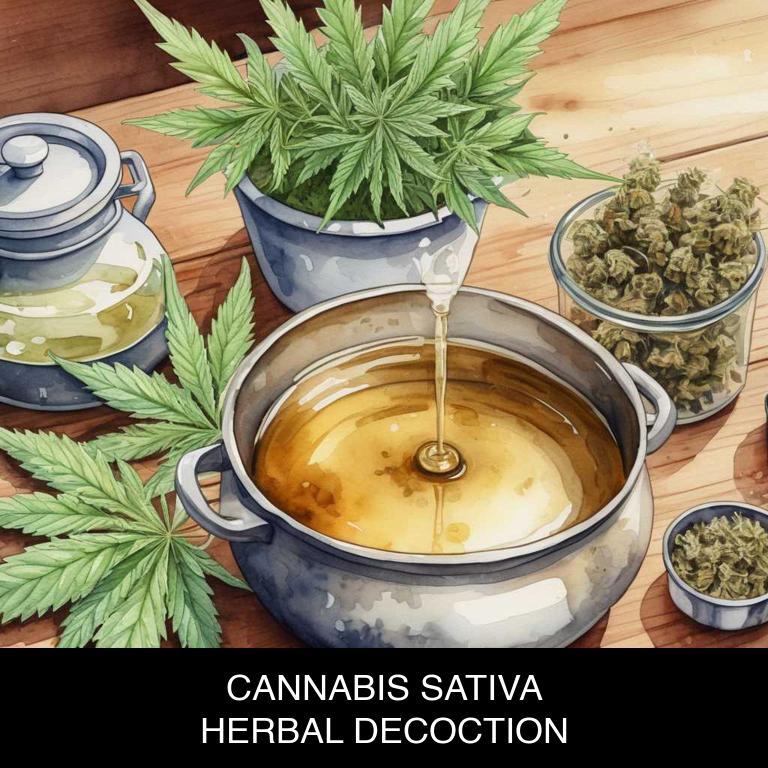
Medicinal Constituents
The list below shows the primary medicinal constituents in Cannabis sativa decoctions that help with back pain.
- Tetrahydrocannabinol: THC is a primary psychoactive compound that helps alleviate back pain by binding to cannabinoid receptors in the body, reducing inflammation and pain perception.
- Cannabidiol: CBD is a non-psychoactive compound that may help with back pain by reducing inflammation, promoting relaxation, and minimizing muscle spasms, which can contribute to pain and discomfort.
- Beta-caryophyllene: BCP is a terpene that has been shown to have anti-inflammatory and analgesic properties, helping to reduce pain and inflammation in the body, which can be beneficial for back pain relief.
Parts Used
The list below shows the primary parts of marijuana used to make decoctions for back pain.
- Leaves: They contain cannabinoids, terpenes, and other compounds that help reduce inflammation and alleviate pain associated with back pain.
- Flowers: The buds contain high concentrations of cannabinoids, particularly THC and CBD, which help to reduce pain and inflammation in the back.
- Roots: The roots of Cannabis sativa contain a higher concentration of CBD and other compounds that may help reduce inflammation and provide relief from back pain.
Quick Recipe
The following recipe gives a procedure to make a basic marijuana for back pain.
- Gather 10 grams of dried cannabis sativa flowers and leaves and store them in a clean container.
- Crush the dried flowers and leaves into fine particles using a mortar and pestle for 5 minutes.
- Combine the crushed cannabis sativa with 500 ml of cold water in a saucepan and heat it over low heat for 10 minutes.
- Reduce the heat to a simmer and steep the mixture for 20-30 minutes or until the liquid reduces by half.
- Strain the decoction through a cheesecloth or a fine-mesh sieve into a clean container and discard the solids.
4. Ginkgo biloba
Maidenhair tree decoctions helps with back pain because of its unique combination of bioactive compounds, particularly falcarinol and falcarindiol.
These potent phytonutrients have been shown to exhibit anti-inflammatory and analgesic properties, which can effectively reduce inflammation and relieve pain in the muscles and joints associated with back pain.
The decoction's soothing properties also help to relax tense muscles, promoting flexibility and reducing stiffness, allowing for improved posture and reduced discomfort.

Medicinal Constituents
The list below shows the primary medicinal constituents in Ginkgo biloba decoctions that help with back pain.
- Flavonoids: Flavonoids, particularly quercetin and kaempferol, in Ginkgo biloba decoctions have anti-inflammatory properties, which help reduce inflammation and pain associated with back pain.
- Bilobalide: Bilobalide, a sesquiterpene trilactone, has neuroprotective properties that may help alleviate back pain by reducing oxidative stress and improving blood flow to the affected areas.
- Ginkgolides: Ginkgolides, specifically ginkgolide A and B, have anti-inflammatory and antioxidant properties that may help reduce pain and inflammation associated with back pain.
Parts Used
The list below shows the primary parts of maidenhair tree used to make decoctions for back pain.
- Leaves: The leaves are the most commonly used part of Ginkgo biloba in decoctions for back pain because they contain flavonoids and terpenoids that have anti-inflammatory properties.
- Buds: The buds are used in decoctions for back pain because they have been found to have analgesic and anti-inflammatory effects, helping to relieve pain and reduce swelling.
- Seeds: The seeds are used in decoctions for back pain because they contain ginkgolic acid, which has been shown to have anti-inflammatory and analgesic properties that can help alleviate back pain.
Quick Recipe
The following recipe gives a procedure to make a basic maidenhair tree for back pain.
- Gather 1-2 teaspoons of dried ginkgo biloba leaves and 1 cup of boiling water for the infusion.
- Steep the dried ginkgo biloba leaves in the boiling water for 5-7 minutes to release its active properties.
- Strain the infusion through a cheesecloth or a fine-mesh sieve to remove the solids.
- Discard the solids and store the ginkgo biloba decoction in the refrigerator for up to 24 hours.
- Drink 1/2 to 1 cup of the cooled ginkgo biloba decoction 2-3 times a day as needed.
5. Curcuma longa
Turmeric decoctions helps with back pain because it contains curcumin, a potent anti-inflammatory compound that reduces joint inflammation and relaxes muscle tension.
This natural remedy also has analgesic properties, which help to alleviate pain and stiffness in the lower back. Additionally, turmeric's antioxidant properties help to reduce oxidative stress, which can contribute to chronic back pain.
By drinking a warm turmeric decoction, individuals can experience relief from discomfort, stiffness, and pain, promoting relaxation and improving overall well-being.
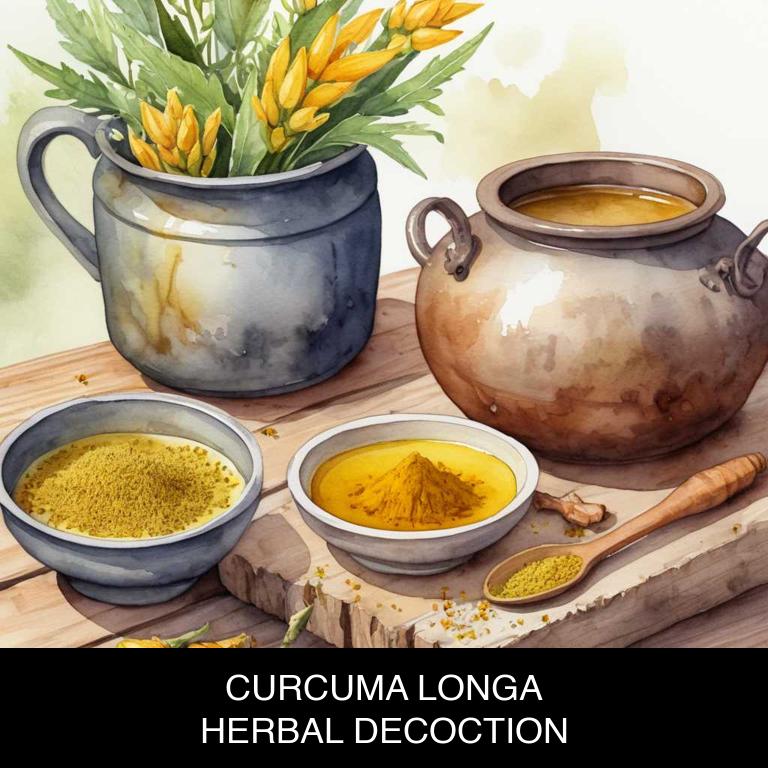
Medicinal Constituents
The list below shows the primary medicinal constituents in Curcuma longa decoctions that help with back pain.
- Curcumin: Curcumin helps with back pain by reducing inflammation and oxidative stress, which are major contributors to pain and discomfort in the lower back.
- Demethoxycurcumin: DMC has potent anti-inflammatory and antioxidant properties that help alleviate back pain by inhibiting the production of pro-inflammatory enzymes and free radicals.
- Turmerones: Turmerones, particularly Ar-turmerone, have anti-inflammatory and analgesic properties that help reduce pain and swelling in the back by interacting with the body's pain pathways and reducing inflammation.
Parts Used
The list below shows the primary parts of turmeric used to make decoctions for back pain.
- Rhyzomes: They are commonly used due to their high curcumin content, which has anti-inflammatory properties that help alleviate back pain.
- Roots: The roots are also frequently used as they contain curcumin and other compounds that help reduce inflammation and relieve back pain.
- Leaves: The leaves are often used in combination with other parts of the plant due to their ability to enhance the bioavailability of curcumin, making it more effective in treating back pain.
Quick Recipe
The following recipe gives a procedure to make a basic turmeric for back pain.
- Grate 1 tablespoon of fresh curcuma longa rhizomes or use 1/2 teaspoon of dried powder for decoction.
- Boil 2 cups of water in a saucepan for 5 minutes over high heat on the stovetop.
- Add the grated or dried curcuma longa to the boiling water and reduce heat to low.
- Simmer the mixture for 15-20 minutes or until the liquid has reduced slightly and the flavors are intense.
- Strain the decoction through a fine-mesh sieve into a cup or tea infuser to discard the solids.
6. Angelica archangelica
Angelica decoctions helps with back pain because of its potent anti-inflammatory properties, which effectively reduce swelling and discomfort in the muscles and joints.
The herbal remedy contains compounds like angelic acid and isoangelicin, which have been shown to inhibit the production of pro-inflammatory chemicals, leading to a significant decrease in pain and stiffness.
Additionally, angelica's warming and stimulating effects help improve blood circulation, further enhancing its analgesic properties and promoting faster recovery from back pain.
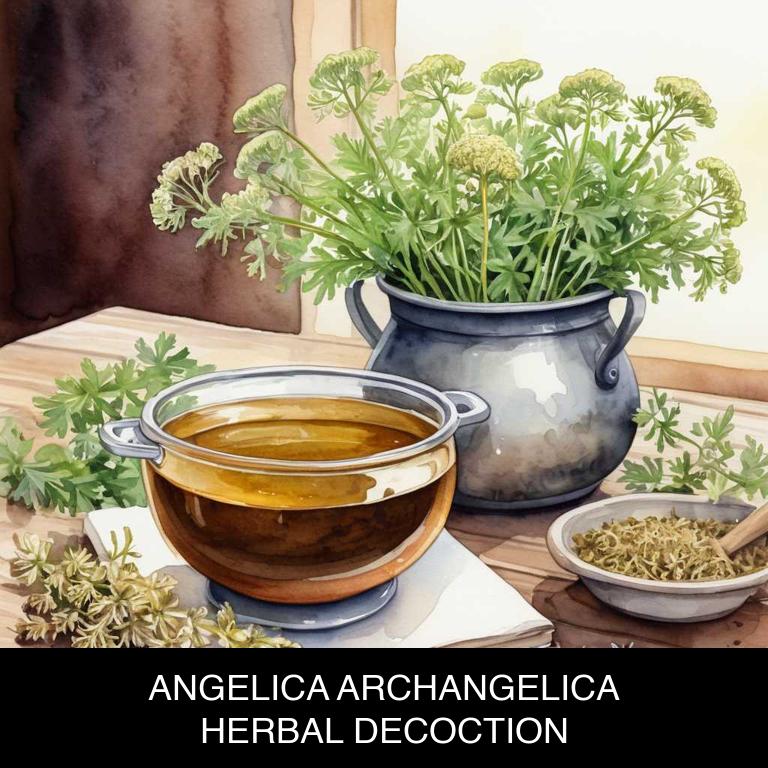
Medicinal Constituents
The list below shows the primary medicinal constituents in Angelica archangelica decoctions that help with back pain.
- Coumarins: These compounds help reduce inflammation and promote relaxation of muscles, which can alleviate back pain caused by muscle spasms.
- Angelol: This phenolic compound has anti-inflammatory properties, which help reduce pain and swelling associated with back pain caused by injuries or overuse.
- Ligustilide: This terpene has analgesic and anti-inflammatory effects, which help block the transmission of pain signals and reduce inflammation, providing relief from back pain.
Parts Used
The list below shows the primary parts of angelica used to make decoctions for back pain.
- Roots: They contain compounds like bergapten and imperatorin, which are believed to have anti-inflammatory and analgesic properties that can help alleviate back pain.
- Leaves: The leaves are rich in essential oils, including bergamotene and limonene, which have anti-inflammatory and pain-relieving properties that can help soothe back pain.
- Stems: The stems of Angelica archangelica are also used to make decoctions for back pain due to their rich content of volatile oils, which have anti-inflammatory and analgesic effects.
Quick Recipe
The following recipe gives a procedure to make a basic angelica for back pain.
- Harvest fresh or dried angelica root or rhizome at the peak of summer for maximum potency.
- Chop the harvested root or rhizome into small pieces to increase surface area for infusion.
- Combine 2-3 teaspoons of chopped root with 1 cup of boiling water for a standard decoction ratio.
- Steep the mixture for 5-10 minutes to allow the active compounds to infuse into the water.
- Strain the decoction through a cheesecloth or fine-mesh sieve to remove the solids.
7. Foeniculum vulgare
Fennel decoctions helps with back pain because of its potent anti-inflammatory properties, which effectively reduce swelling and discomfort in the muscles and joints.
The decoction's anise-like flavor is also said to relax the abdominal muscles, relieving tension that can contribute to back strain.
Additionally, fennel's warming properties help to soothe soreness and stiffness, making it a natural remedy for alleviating lower back pain and promoting overall spinal health.
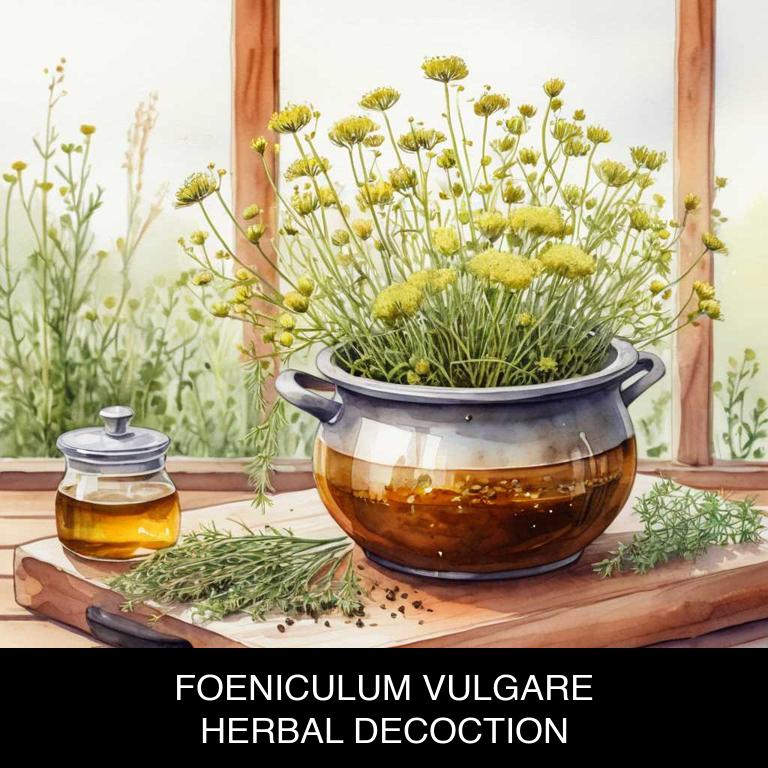
Medicinal Constituents
The list below shows the primary medicinal constituents in Foeniculum vulgare decoctions that help with back pain.
- Trans-anethole: This terpene compound has anti-inflammatory and analgesic properties, which can help alleviate back pain by reducing inflammation and relieving pain sensations.
- Foeniculin: This sesquiterpene has been found to possess anti-inflammatory and antioxidant properties, which can help reduce inflammation and oxidative stress associated with back pain.
- Apigenin: This flavonoid has been found to have analgesic and anti-inflammatory properties, which can help relieve pain and reduce inflammation in the muscles and joints associated with back pain.
Parts Used
The list below shows the primary parts of fennel used to make decoctions for back pain.
- Seeds: They are commonly used due to their analgesic and anti-inflammatory properties, which help to relieve back pain and reduce inflammation.
- Leaves: They are often used in decoctions for their anti-inflammatory and pain-relieving properties, which help to soothe back pain and reduce discomfort.
- Stems: They are sometimes used in traditional medicine due to their anti-inflammatory and analgesic properties, which can help to alleviate back pain and reduce inflammation.
Quick Recipe
The following recipe gives a procedure to make a basic fennel for back pain.
- Gather 2-4 grams of dried foeniculum vulgare root or seeds for decoction.
- Combine the dried foeniculum vulgare with 250 milliliters of cold water in a saucepan.
- Bring the mixture to a boil over medium heat and then reduce the heat to low.
- Simmer the decoction for 5-7 minutes or until the liquid has reduced slightly.
- Strain the decoction through a fine-mesh sieve into a cup or mug.
8. Urtica dioica
Stinging nettle decoctions helps with back pain because of its unique ability to reduce inflammation, relax muscles, and improve circulation.
The decoction's anti-inflammatory properties target sore joints and muscles, alleviating tension and stiffness that can cause backache.
Additionally, the plant's relaxant compounds calm muscle spasms and cramps, while its antioxidant properties promote healing and regeneration of damaged tissues, ultimately providing relief from chronic back pain.

Medicinal Constituents
The list below shows the primary medicinal constituents in Urtica dioica decoctions that help with back pain.
- Stachydrine: It acts as an anti-inflammatory agent, reducing pain and inflammation in the back muscles and joints.
- Alkylamides: These compounds have analgesic and anti-inflammatory properties, which help to alleviate back pain by reducing swelling and relieving discomfort.
- Polysaccharides: They have anti-inflammatory and antioxidant properties, which help to reduce inflammation, promote healing, and alleviate back pain caused by muscle strain or injury.
Parts Used
The list below shows the primary parts of stinging nettle used to make decoctions for back pain.
- Leaves: The leaves are the most commonly used part of Urtica dioica due to their rich content of anti-inflammatory compounds, such as histamine and other bioactive alkaloids.
- Roots: The roots are used for their analgesic and anti-inflammatory properties, which help to reduce pain and inflammation associated with back pain.
- Stems: The stems are used due to their high content of flavonoids and other bioactive compounds, which have anti-inflammatory and analgesic effects that help to alleviate back pain.
Quick Recipe
The following recipe gives a procedure to make a basic stinging nettle for back pain.
- Gather fresh urtica dioica leaves and stems in the morning after dew has fallen but before the sun reaches its peak intensity.
- Chop 2-4 teaspoons of the gathered plant material into small pieces to increase surface area for infusion.
- Combine the chopped plant material with 1 cup of boiling water in a heat-resistant container to create the decoction.
- Simmer the mixture for 5-10 minutes on low heat to allow the bioactive compounds to infuse into the water.
- Strain the decoction through a cheesecloth or fine-mesh sieve into a clean container to remove solids and filter the liquid.
9. Rosa rugosa
Beach rose decoctions helps with back pain because of its anti-inflammatory and analgesic properties.
The decoction's flavonoids and phenolic acids work together to reduce swelling and alleviate pain in the muscles and joints, providing relief from chronic backache. Additionally, beach rose is known for its warming effect, which can help relax tense muscles and improve blood circulation, further reducing discomfort and stiffness.
By incorporating beach rose decoctions into a regular regimen, individuals can experience significant alleviation of back pain and improved overall well-being.

Medicinal Constituents
The list below shows the primary medicinal constituents in Rosa rugosa decoctions that help with back pain.
- Flavonoids: These plant compounds help with back pain by reducing inflammation and modulating the body's response to pain, thereby alleviating discomfort and promoting relaxation.
- Glycosides: Rosa rugosa glycosides have been shown to have anti-inflammatory and analgesic properties, which can help reduce muscle and joint pain associated with back pain.
- Tannins: Tannins present in Rosa rugosa decoctions have been found to possess antioxidant and anti-inflammatory properties, which can help reduce oxidative stress and inflammation in the body, thereby alleviating back pain.
Parts Used
The list below shows the primary parts of beach rose used to make decoctions for back pain.
- Roots: They are rich in antioxidants and have anti-inflammatory properties that may help alleviate back pain.
- Leaves: They contain flavonoids and phenolic acids that may help reduce inflammation and relieve back pain.
- Barks: They have been used in traditional medicine to relieve pain and inflammation due to their content of flavonoids and phenolic acids.
Quick Recipe
The following recipe gives a procedure to make a basic beach rose for back pain.
- Harvest rosa rugosa flowers and leaves by cutting them when they are in full bloom for 2-3 weeks.
- Dry the harvested flowers and leaves by spreading them out in a single layer on paper for 1-2 weeks.
- Combine 1 ounce of dried rosa rugosa flowers and leaves with 4 cups of water in a saucepan.
- Heat the mixture over medium heat for 10-15 minutes or until the decoction has reduced to 2 cups.
- Strain the decoction through a cheesecloth or a fine-mesh sieve into a clean container for storage.
10. Vaccinium macrocarpon
Highbush cranberry decoctions helps with back pain because of its rich anti-inflammatory properties.
The decoction's bioactive compounds, such as anthocyanins and flavonoids, work to reduce inflammation in the muscles and joints, thereby alleviating tension and discomfort.
Additionally, highbush cranberry decoctions have been shown to possess analgesic properties, helping to numb pain signals sent to the brain, providing relief from backaches and stiffness.
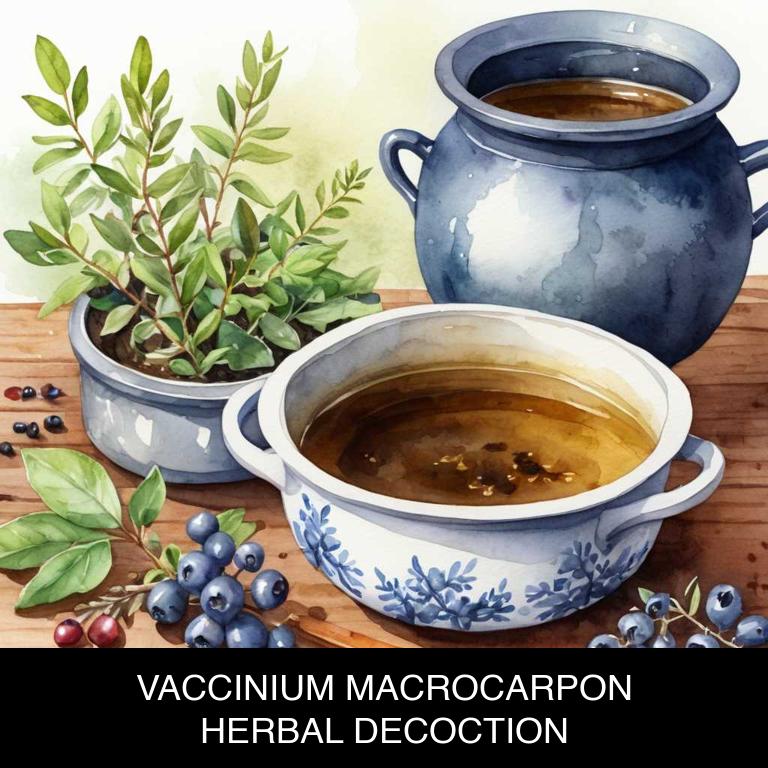
Medicinal Constituents
The list below shows the primary medicinal constituents in Vaccinium macrocarpon decoctions that help with back pain.
- Quercetin: This flavonoid acts as an anti-inflammatory agent, reducing pain and inflammation in the back by inhibiting the production of pro-inflammatory enzymes.
- Anthocyanins: These powerful antioxidants have anti-inflammatory and analgesic properties, helping to reduce pain and inflammation in the back by scavenging free radicals and preventing tissue damage.
- Epicatechin: This flavonoid has potent anti-inflammatory and analgesic properties, helping to reduce pain and inflammation in the back by inhibiting the production of pro-inflammatory cytokines and enzymes.
Parts Used
The list below shows the primary parts of highbush cranberry used to make decoctions for back pain.
- Fruits: Used for their anti-inflammatory and antioxidant properties to help alleviate back pain.
- Leaves: Utilized for their analgesic and anti-inflammatory effects to reduce back pain and inflammation.
- Roots: Employed for their anti-inflammatory and pain-relieving properties to help alleviate back pain and discomfort.
Quick Recipe
The following recipe gives a procedure to make a basic highbush cranberry for back pain.
- Harvest vaccinium macrocarpon fruits in late summer or early fall when fully ripe and purple in color.
- Clean and sort the vaccinium macrocarpon fruits removing any stems or debris.
- Dry the vaccinium macrocarpon fruits in a single layer at 40°c for 12 hours to reduce moisture content.
- Use a ratio of 1 part dried vaccinium macrocarpon to 4 parts water to create decoction.
- Steep the decoction for 30 minutes at 80°c before straining and discarding the solids.
What is the best combination of herbal decoctions to use for back pain?
The best combination of herbal decoctions that help with back pain is a blend of Turmeric, Ginger, and Ashwagandha.
Turmeric contains curcumin, which reduces inflammation and relieves pain, while Ginger's anti-inflammatory properties help to calm muscle spasms. Ashwagandha, an adaptogenic herb, helps to reduce stress and anxiety, which can exacerbate back pain.
Combine equal parts of each decoction and drink 2-3 times a day to experience the benefits of a soothing and healing remedy for back pain.
What ailments similar to back pain are treated with herbal decoctions?
Ailments similar to back pain that are treated with herbal decoctions are sciatica, arthritis, and rheumatism.
Decoctions of herbs such as turmeric, ginger, willow bark, and devil's claw are commonly used to relieve inflammation, reduce pain, and improve joint mobility.
Additionally, decoctions made from herbs like cayenne pepper and capsicum are used to treat fibromyalgia and migraines, which can also be characterized by chronic pain and stiffness.